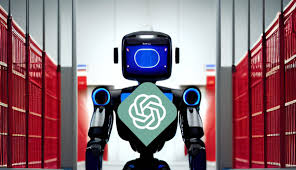Dan GPT has the capability of taking this relationship to a whole new level and accelerate learning process for us by generating subjective adaptive learning experiences. According to a 2022 McKinsey report, personalized learning can boost retention rates by up to around 30%. Dan GPT can adapt and has awareness to each respective learning preferences, needs, based on individual learner’s progression in order to deliver real time customized content. An example here could be if a student is having problems with an specific concept, Dan GPT can adjust its lesson plan and concentrate more in that subject providing extra resources and explaining things at a rate traditional methods couldn’t cope.
Increased learning capabilities are also a significant advantage, thanks to the efficiency at which an AI can dispense educational content. Dan GPT is responsible for ensuring that students receive feedback in less than 200msec (yes you read it correct) and all the messages are serviced with least latency, which ensures instant responses to student request — a key factor contributing towards engagement. Almost instant feedback allows students to correct their errors on the spot without getting frustrated allowing for greater understand. This is how quick remote learning can be, unlike conventional education systems where it could take days or hours to get feedback on our work.

The main characteristic of Dan GPT, in learning context, is customization. It delivers a more hands-on learning experience with appropriately leveled content and presentations. A study by the Bill & Melinda Gates Foundation from 2023 revealed that technologies for adaptive learning can enhance student outcomes in math and science up to 20%. This ability to respond with on-the-fly data empowers each student to move at his or her own speed, allowing them the get through more of the course and lowering attrition.
As education guru Salman Khan once famously declared, “Personalized learning is the future of education. Dan GPT, on the other hand achieves this by employing machine learning models to understand what students would need next. We do that by sifting through an enormous amount of data about how students are performing, learning lessons from changes we see in the data to reveal potential areas where educators can improve or additional support might be needed for certain learners.
To learn more about what AI for education can do, then take a look at platforms like dan gpt which are offering an early view of the next wave personalized learning solutions based in artificial intelligence that could have big impacts on how students digest educational content.